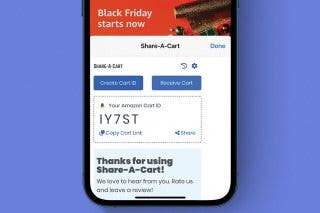How to Enable iMessage on an iPhone, iPad & Mac


What to Know
- You can enable iMessage from the Settings app on your iPhone or iPad.
- Back up your messages to the cloud in your Apple Account settings.
- You can also set up iMessage on your Mac by logging into your Apple Account in the Messages app.
Do you want to know how to enable iMessage on your iPhone, iPad, or Mac computer? Are you wondering what iMessage is, and what is the difference between it and an RCS/SMS (text message)? In this comprehensive guide, we'll cover how to set up iMessage on iPhone and answer your burning Messages app questions.
What Is iMessage & Why Should You Use It
- iMessage is Apple's messaging service, and iMessages can only be sent between iMessage users.
- iMessages are sent over the internet. If you aren’t connected to Wi-Fi, the message will count toward your monthly cellular data plan. But if you are connected to Wi-Fi, the iMessage will be sent freely and won't count towards your data plan.
- Since you can send iMessages using Wi-Fi alone, you can also send iMessages from your iPad or Mac even without your phone.
- You can visually recognize the difference between an SMS or RCS text message and an iMessage by the color of the message bubble. iMessages send as blue bubbles, while text messages send as green bubbles.
- What is an SMS message? SMS stands for "Short Message Service." They are sent through your cellular service provider (Verizon, AT&T, T-Mobile, etc.) as part of your text messaging plan.
- What is an RCS message? RCS stands for "Rich Communication Services." RCS is being used in place of SMS messages when available. RCS messages are sent over cellular data just like SMS messages.
iMessage is the best way to communicate with other iPhone users for a couple of reasons. First, as we discussed in the above section, you can save on data when you iMessage, as long as you are connected to Wi-Fi. Whenever you are home, or at a cafe, or anywhere else with a Wi-Fi connection, your iMessages will send over the internet connection, unlike text messages, which use your text messaging plan.
Another reason you should enable iMessage on iPhone is that you'll be able to send and receive messages across multiple devices. When you enable iMessage on your iPhone, iPad, and Mac, you can check your conversations with other iPhone users from any of your devices, so if you're chatting with a friend and your phone dies, you can just continue the conversation on your Mac. We'll go over how to enable iMessage on all these devices, so you can start taking advantage of these perks. (You can also get text messages on Mac if you have OS X Yosemite or later.) So, how do you enable iMessage on iPhone and Mac?
How to Turn On iMessage on iPhone
You can enable iMessage right from the Settings app on your iPhone or iPad. For more helpful iPhone tutorials and tricks, be sure to sign up for our free Tip of the Day newsletter. Now, here's how to enable iMessage:
- Open the Settings app, and tap Apps.
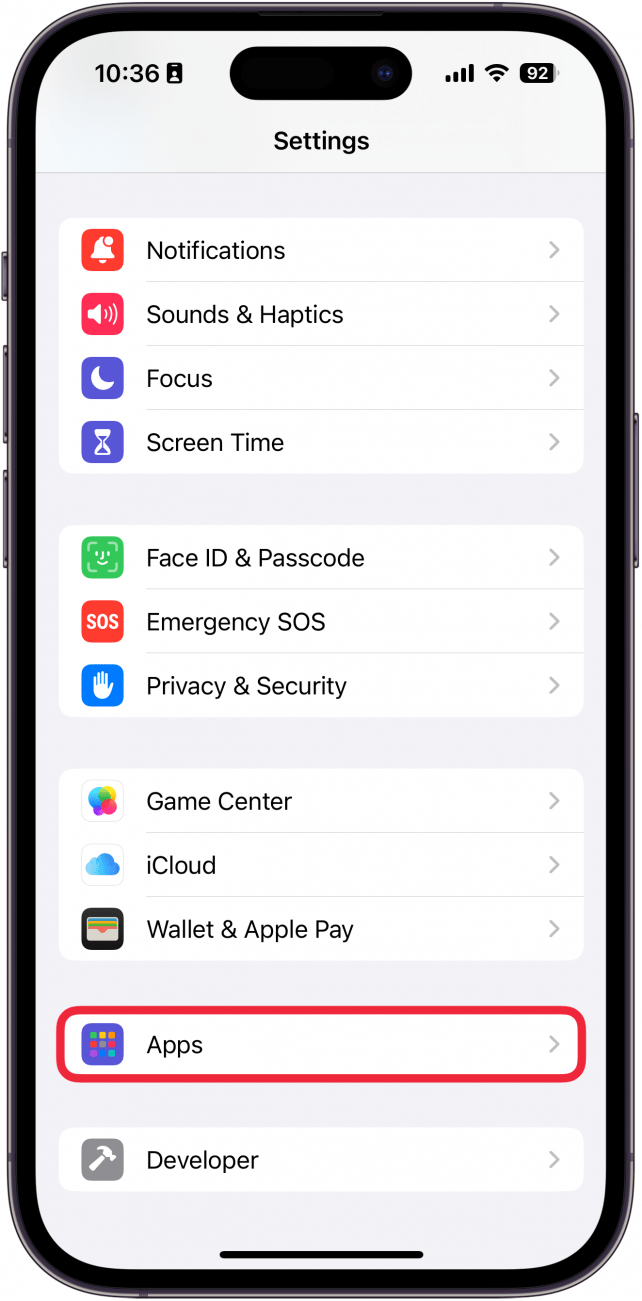
- Find the Messages app either by scrolling through the app list or by using the search bar.
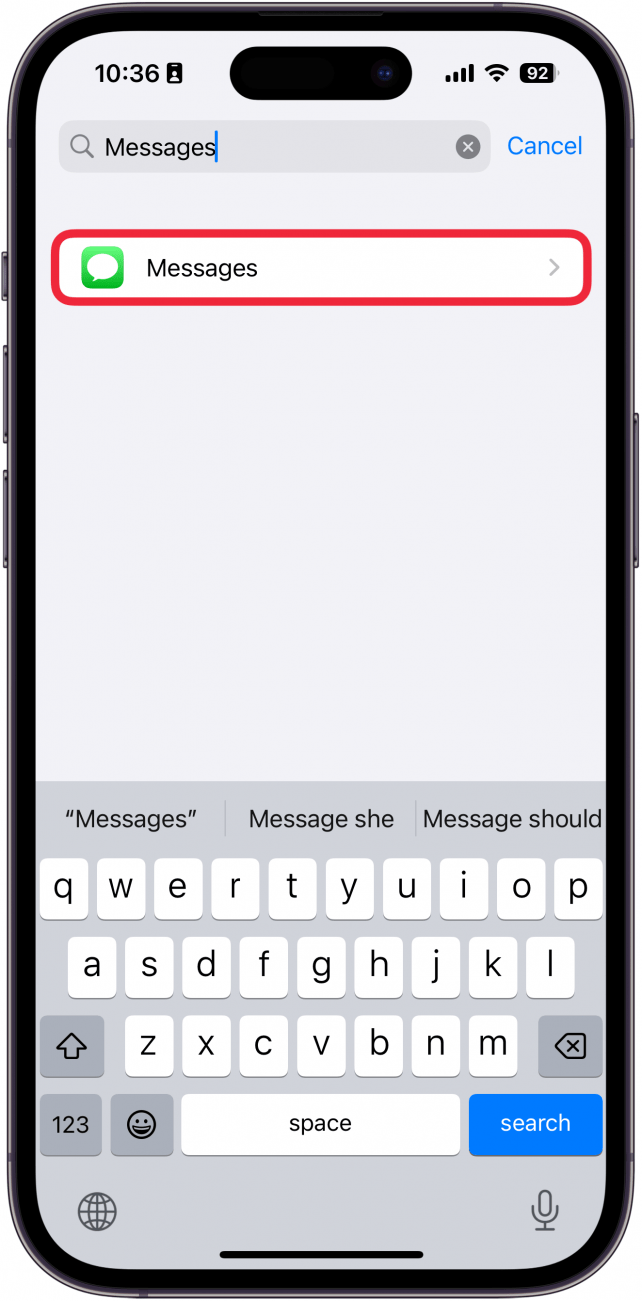
- Ensure iMessage is toggled on.
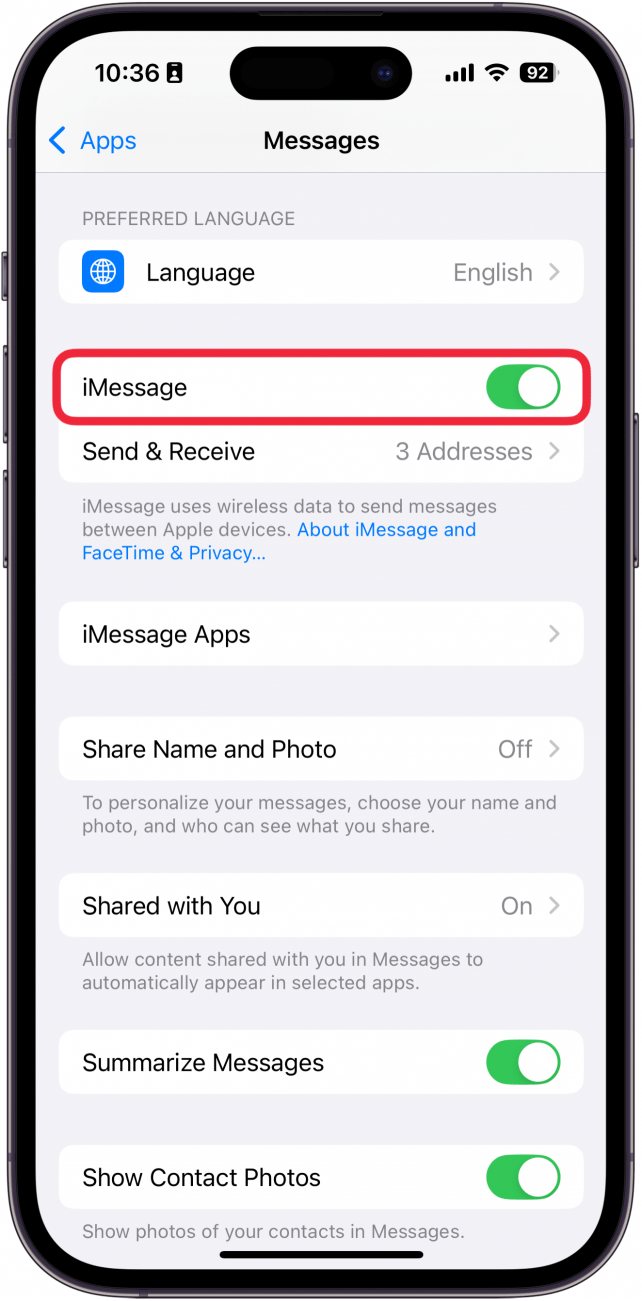
That's how to enable iMessage on iPhone. You’re ready to begin sending iMessages to other friends on their iPhone, iPad, or Mac. You’ll know you’ve successfully sent an iMessage if your outgoing message is blue. If you want to know how to check iMessage settings, you can find them by following the above steps.
Enable Messages in iCloud on iPhone
A good way to make sure you never lose your messages even if something happens to your iPhone is to enable Messages in iCloud. When you enable Messages in iCloud, all messages you send and receive are saved to your iCloud. This also means that you can access all your conversations when you sign into another device with Messages in iCloud turned on using your Apple ID. Here's how to take advantage of this feature:
- Open Settings, and tap iCloud.
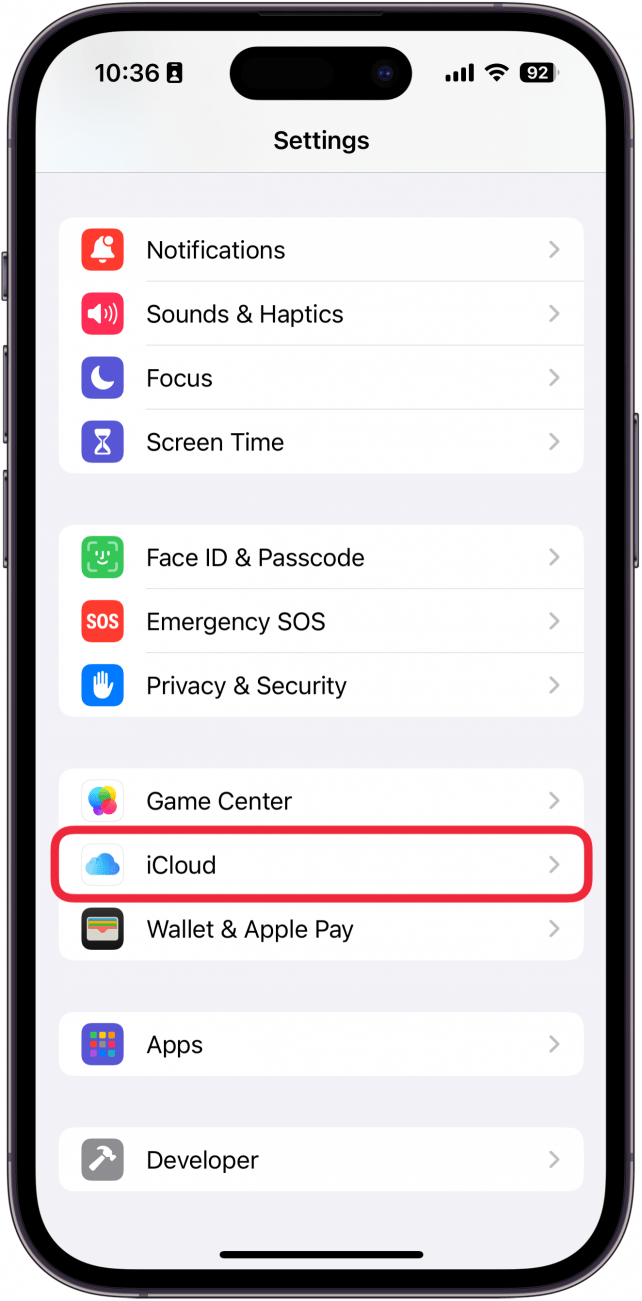
- Tap Messages.
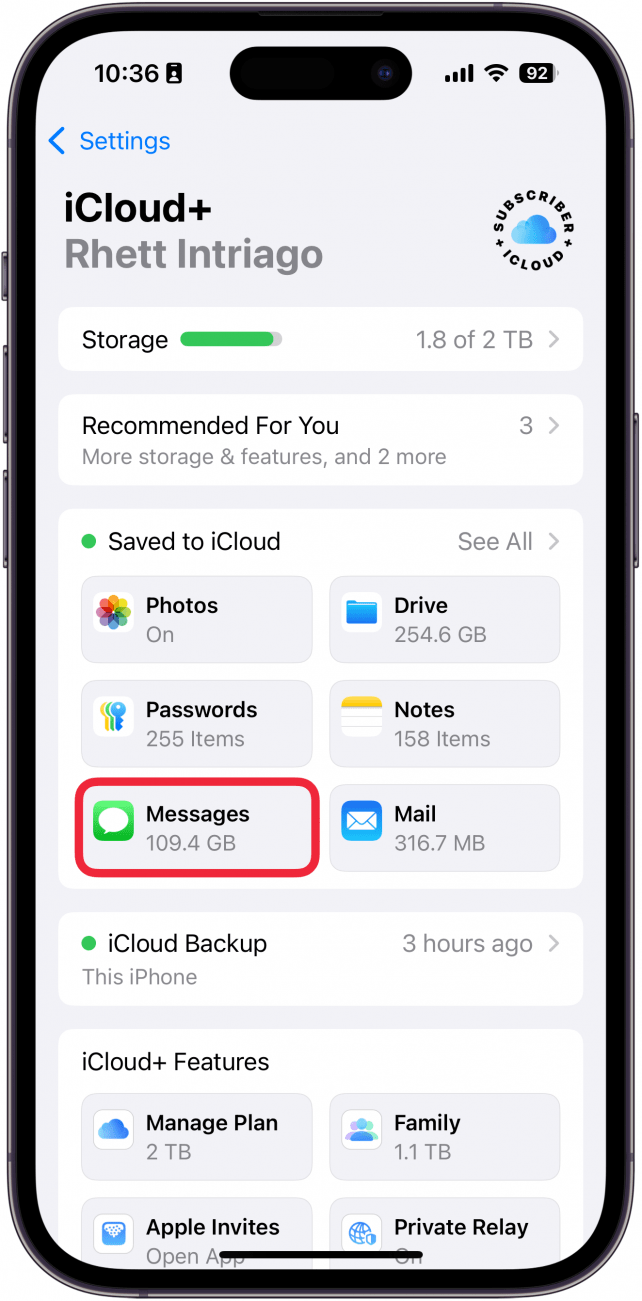
- Ensure the toggle next to Use on this iPhone is enabled.
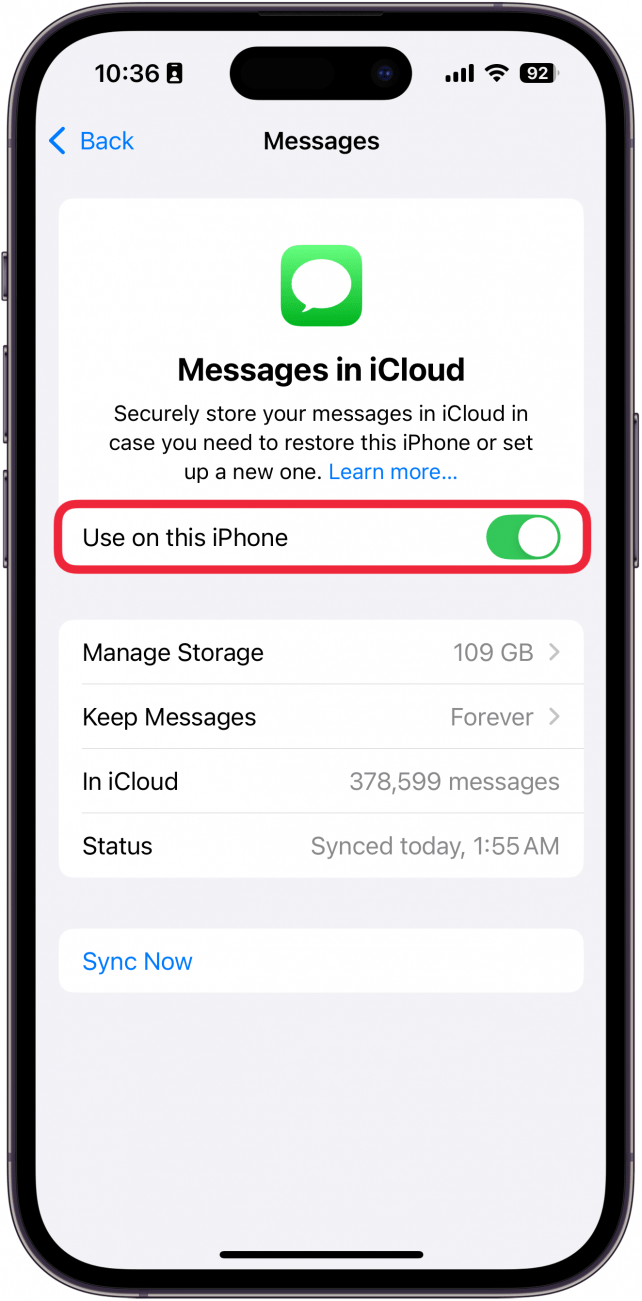
Now your messages will be uploaded to the cloud!
How to Turn On iMessage on a Mac
Last but not least, how do you enable iMessage on the Mac? You can get your iPhone messages on your Mac, thanks to iMessage. Skip to How to Turn iMessage Off on Mac if you’re having the opposite problem. Otherwise, here's how to turn on iMessage on your Mac:
- You must be connected to Wi-Fi for iMessages to work on your Mac. Open the Messages app on your Mac.
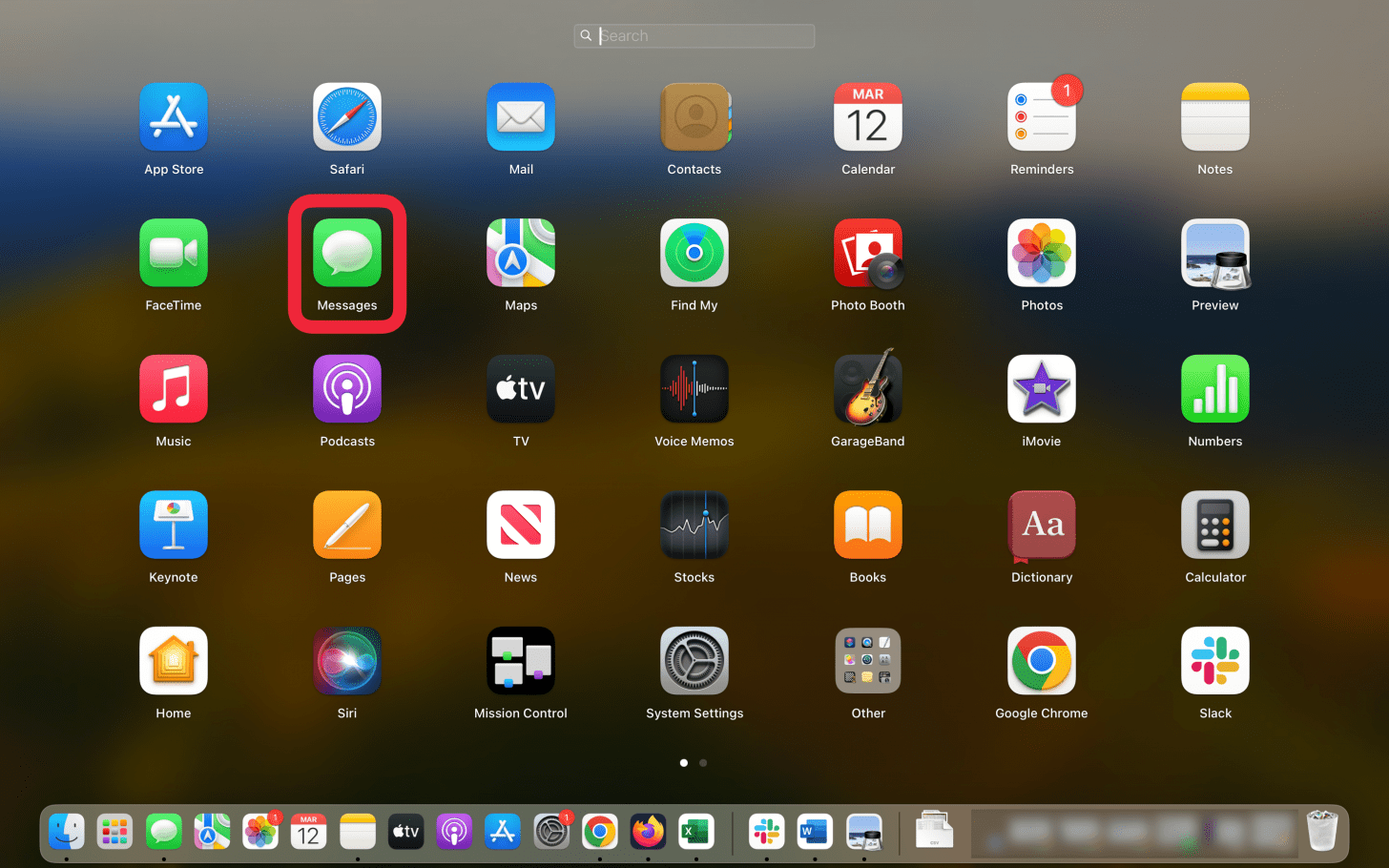
- If you're not already signed in, a window will pop up so you can sign in with your Apple ID and password.
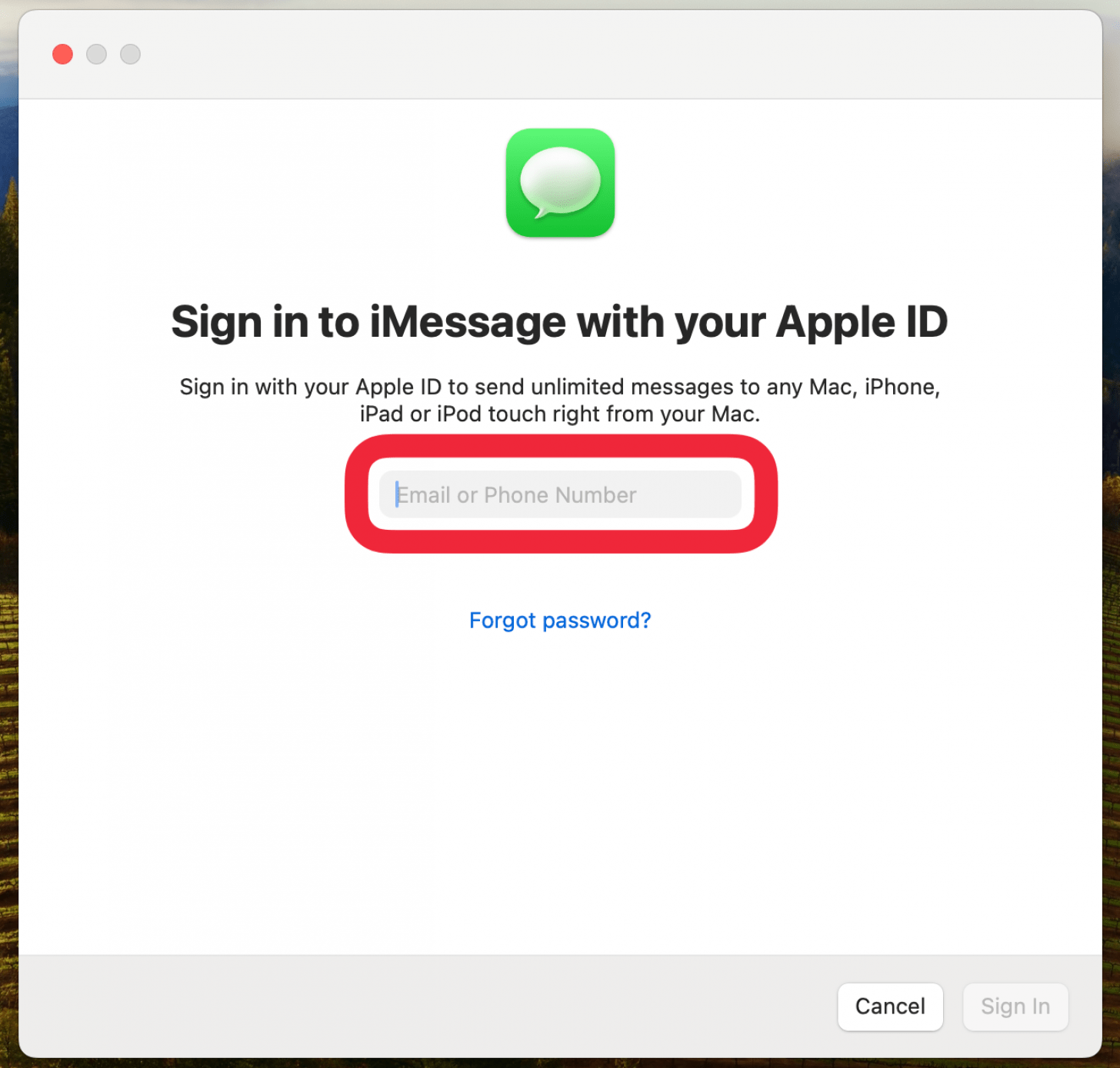
Now you're ready to start sending iMessages from your Mac. Although, if you forgot your password or your Apple ID itself, you can do an iCloud password reset.
Once you have iMessage set up on your Mac, there are several ways you can customize it to get the most of our iMessages on your Mac.
Enable Messages in iCloud on Mac
Like on your iPhone, you can turn on Messages in iCloud on your Mac, so that all your conversations are saved and updated across all enabled devices. Here's how:
- With the Messages app open on your Mac, click Messages.
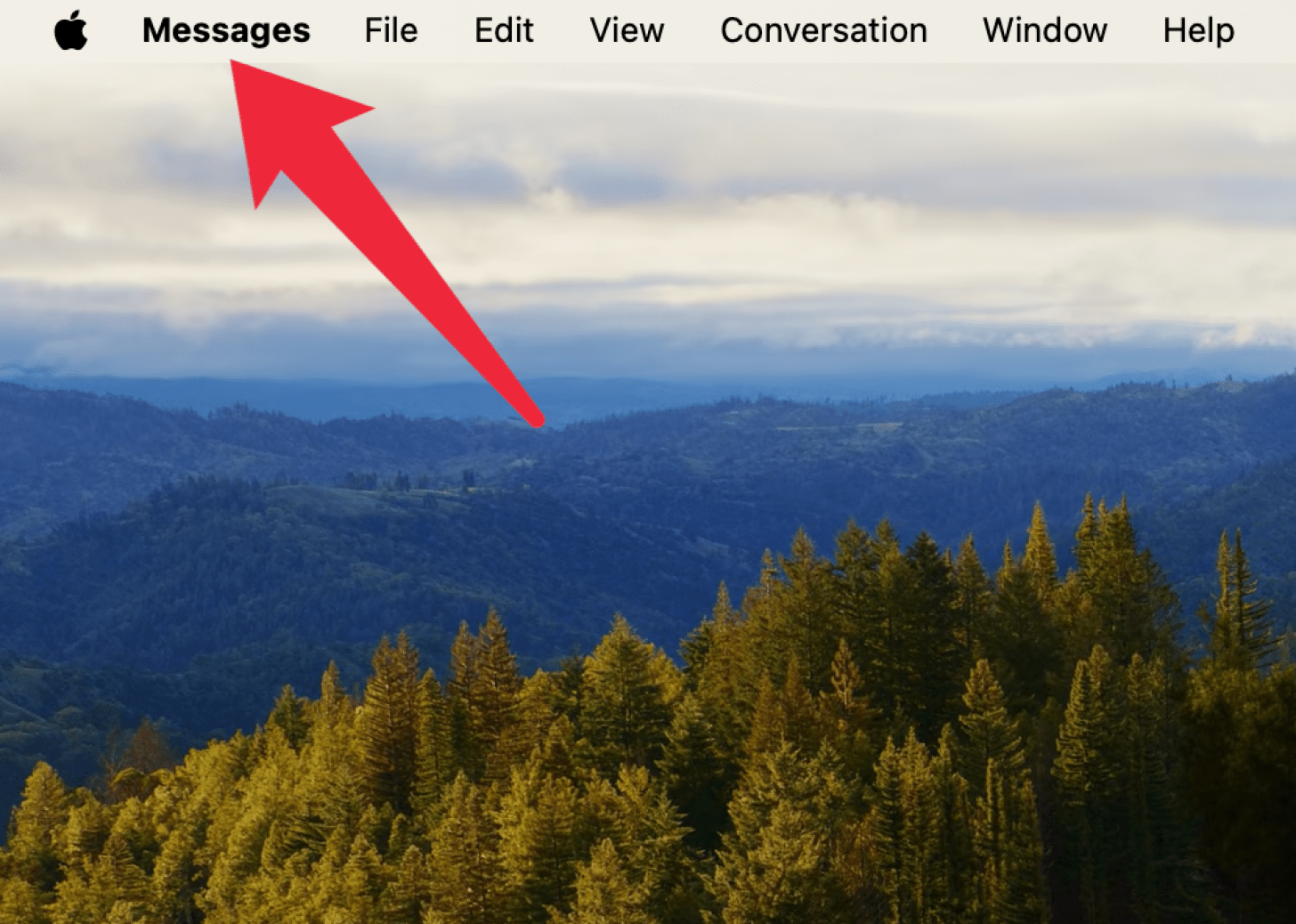
- Click Settings in the drop-down list.
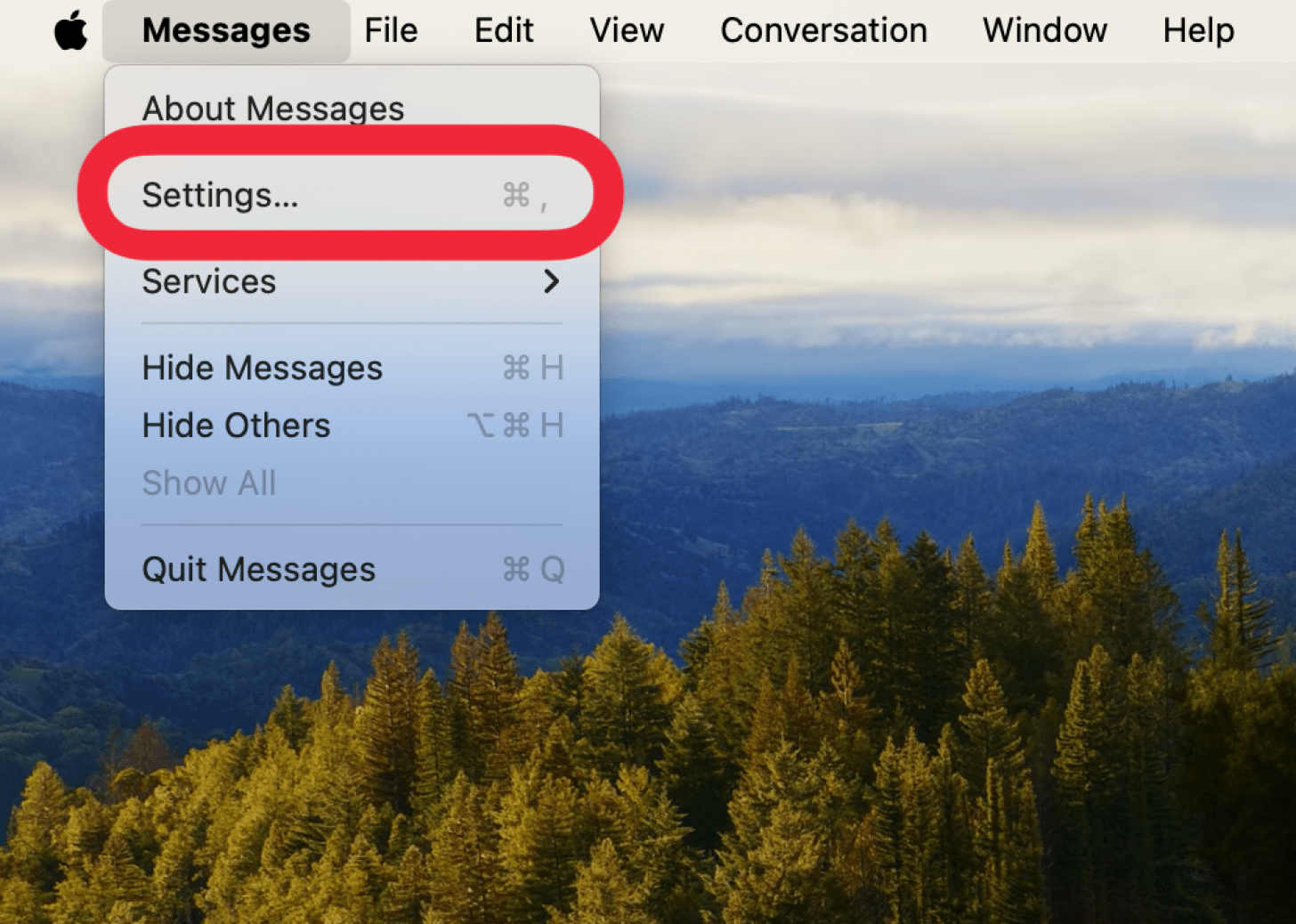
- Click iMessage.
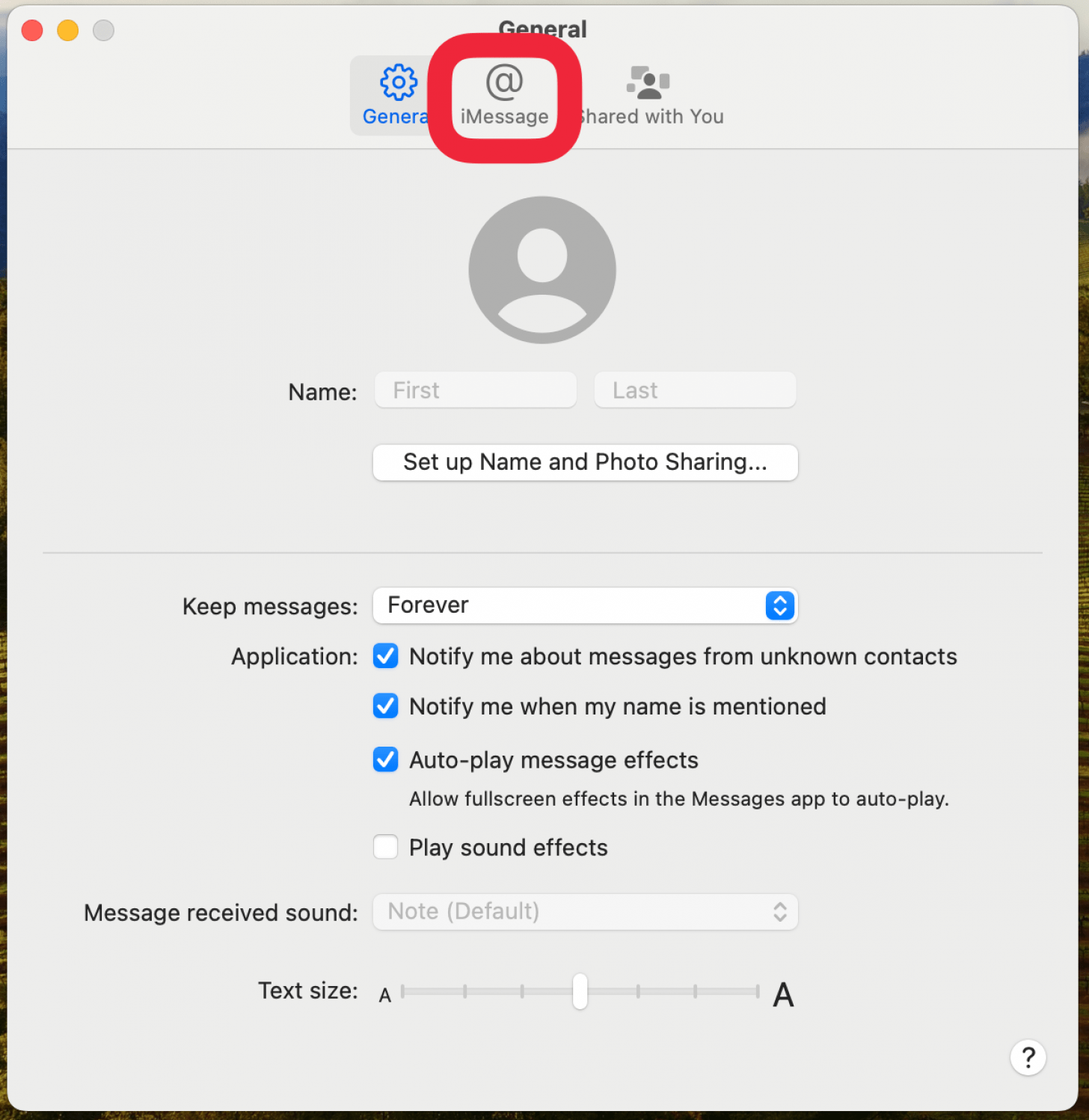
- Select Enable Messages in iCloud.
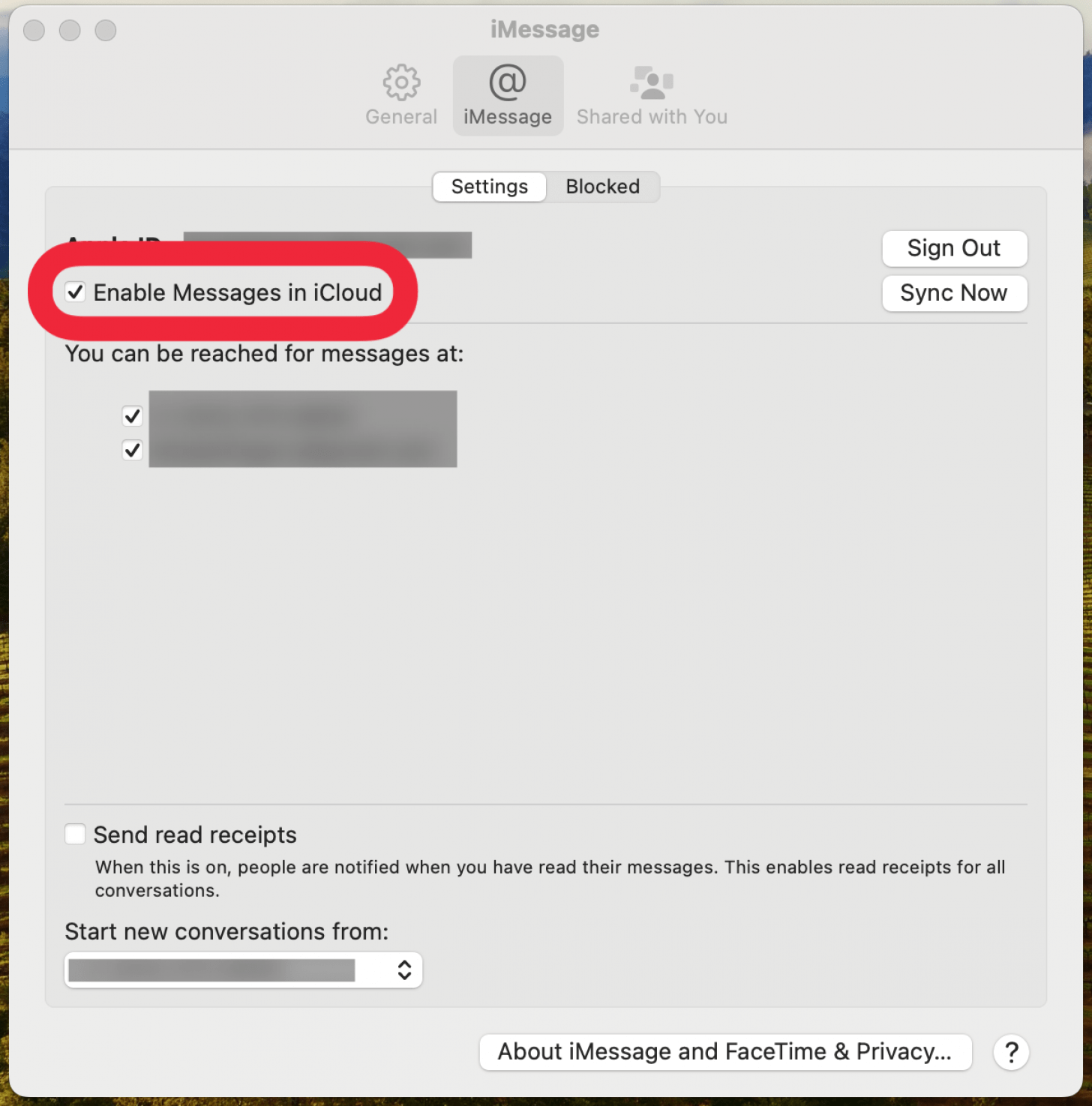
Your messages should now be uploaded to iCloud.
Set Up Name & Photo Sharing
On your Mac, you can set a name and photo that you want other users to see when you send messages to them from the Messages app on your Mac. Here's how:
- In the Settings screen, click General.
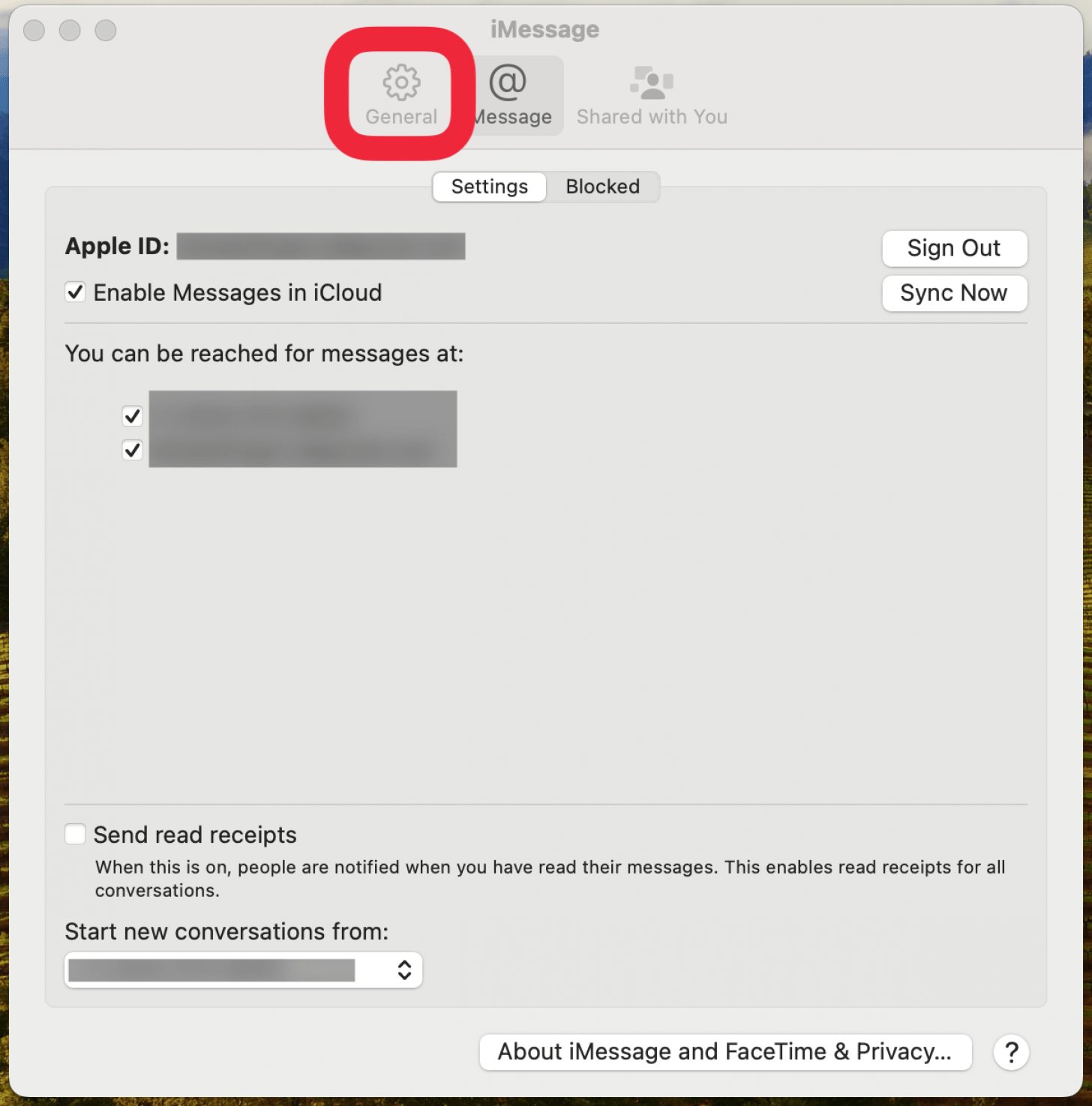
- Select Set up Name and Photo Sharing.
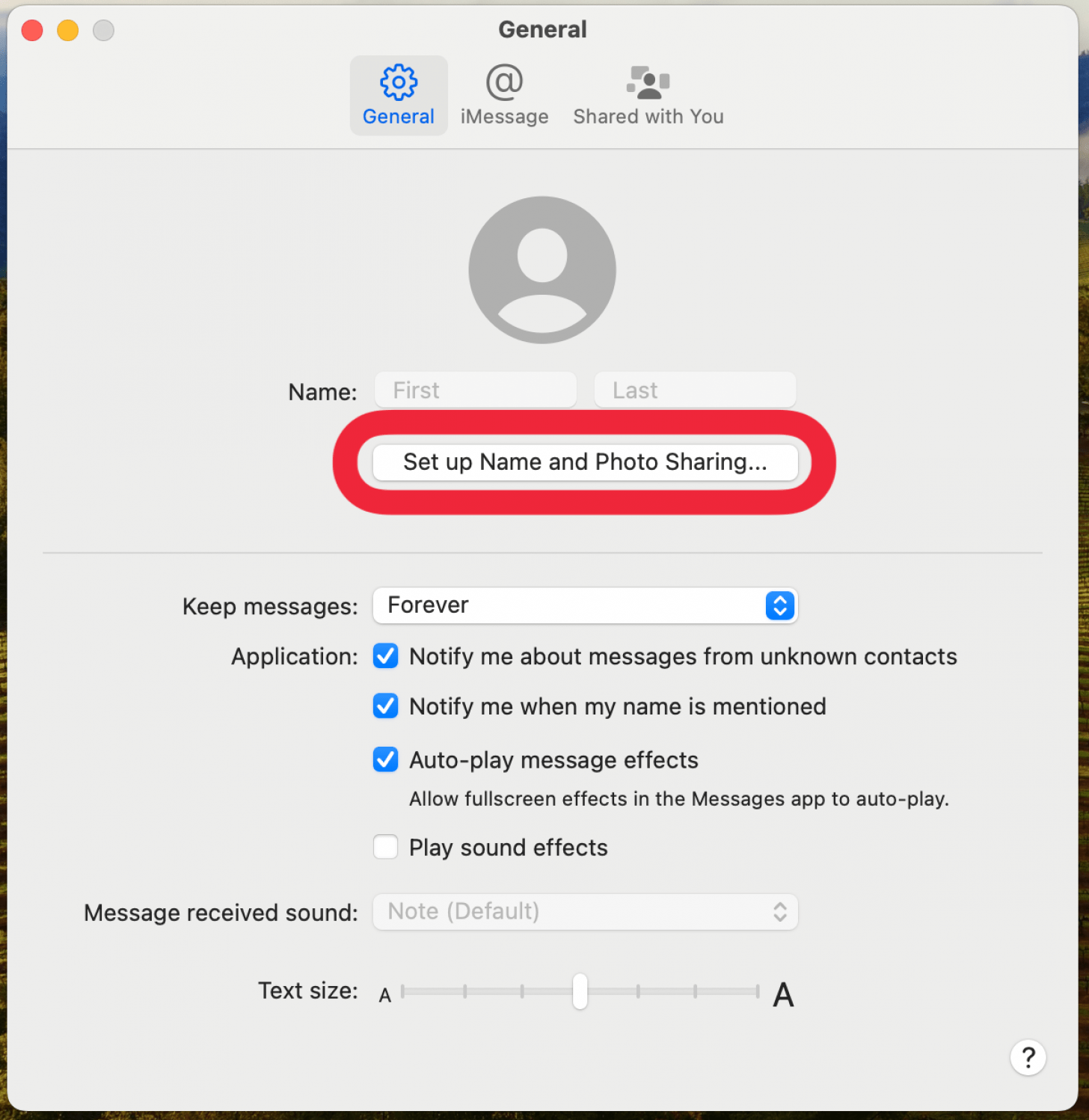
- Click Continue.
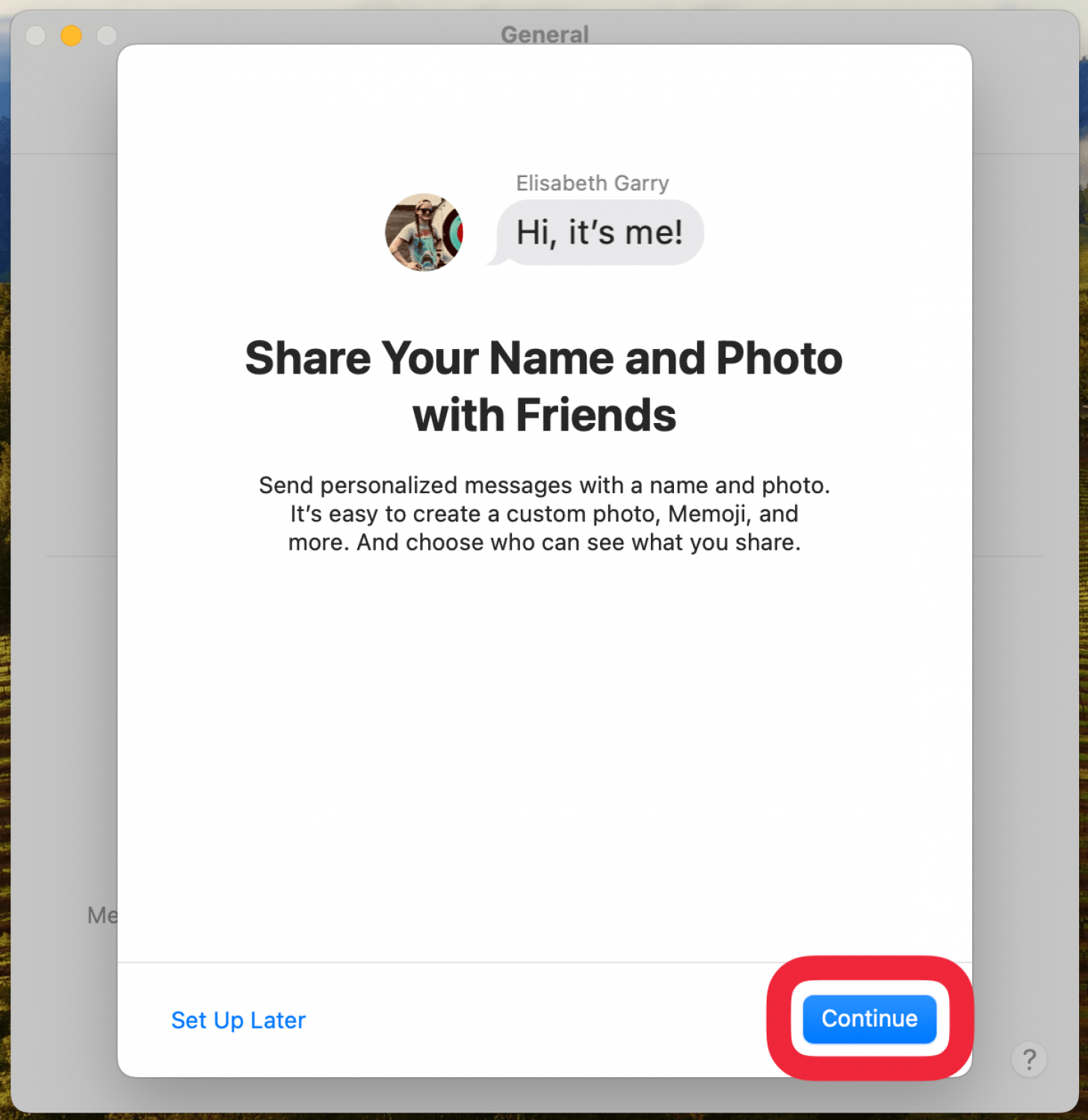
- Select a the photo you want to share, and click Continue.
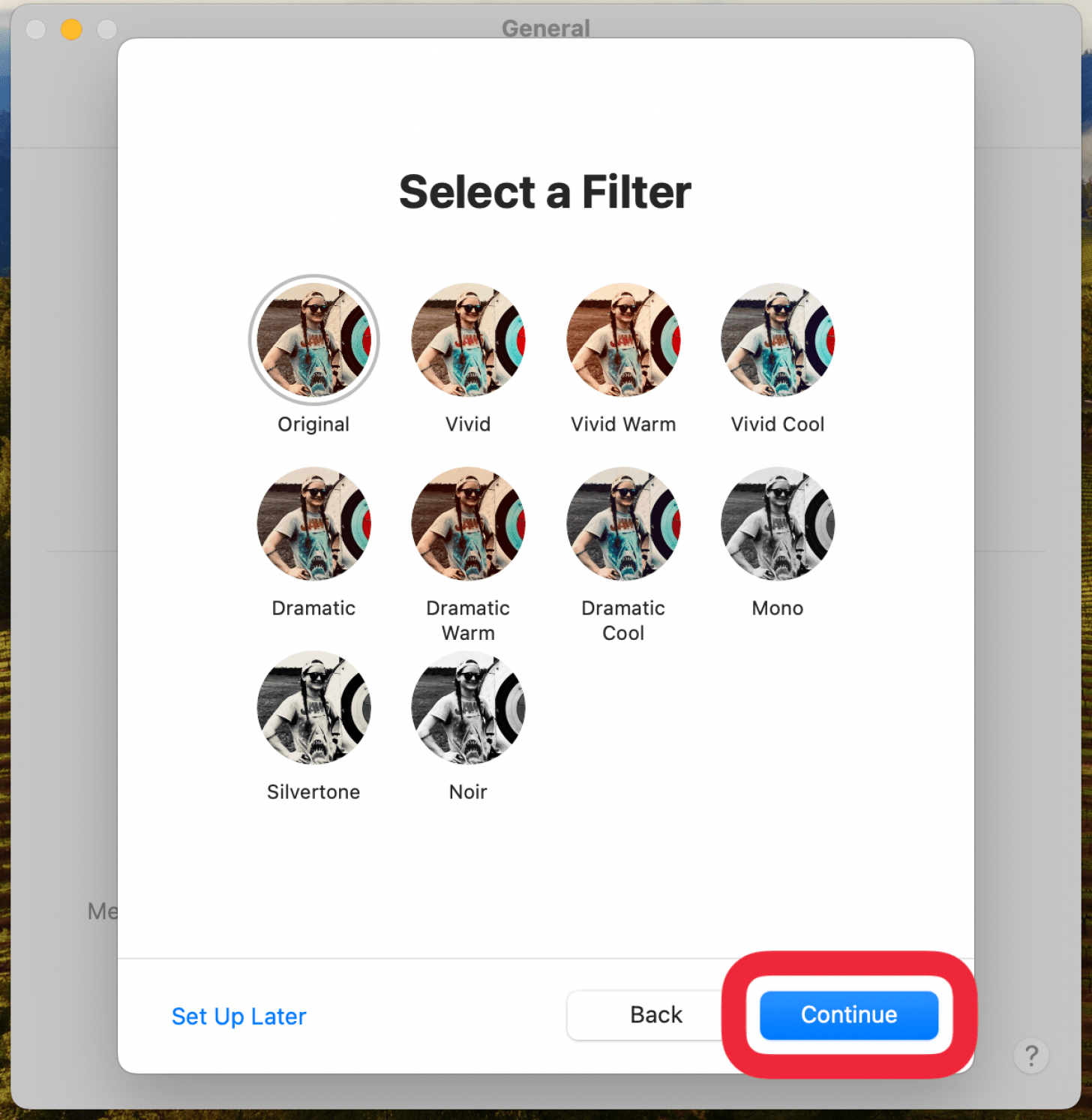
- Select a photo filter, and click Continue.

- You can customize how you want your name to appear and choose whether you share your information with contacts only or everyone. Then, click Done.
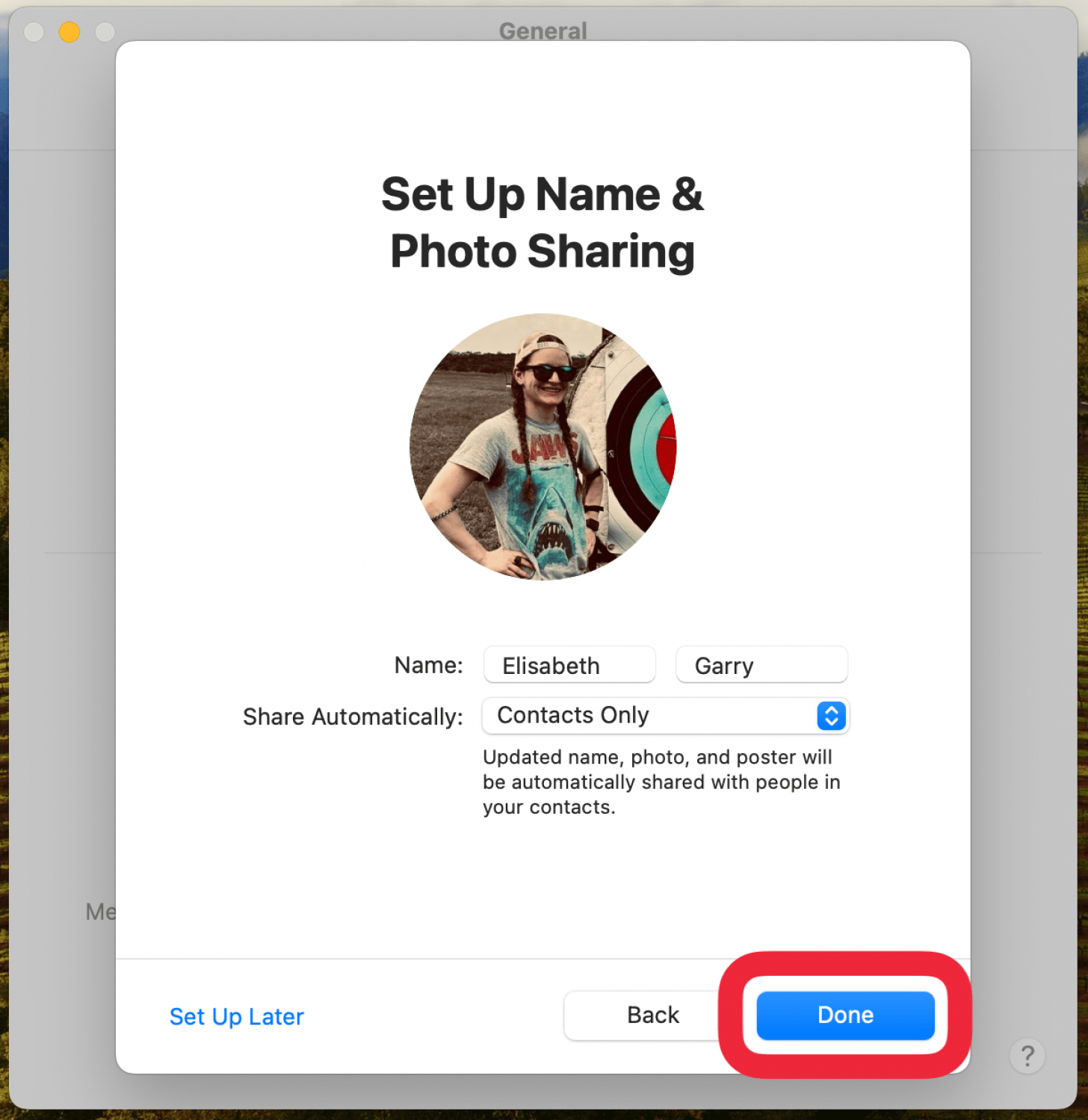
Now you have name and photo sharing set up.
Set Your Email Address & Phone Number
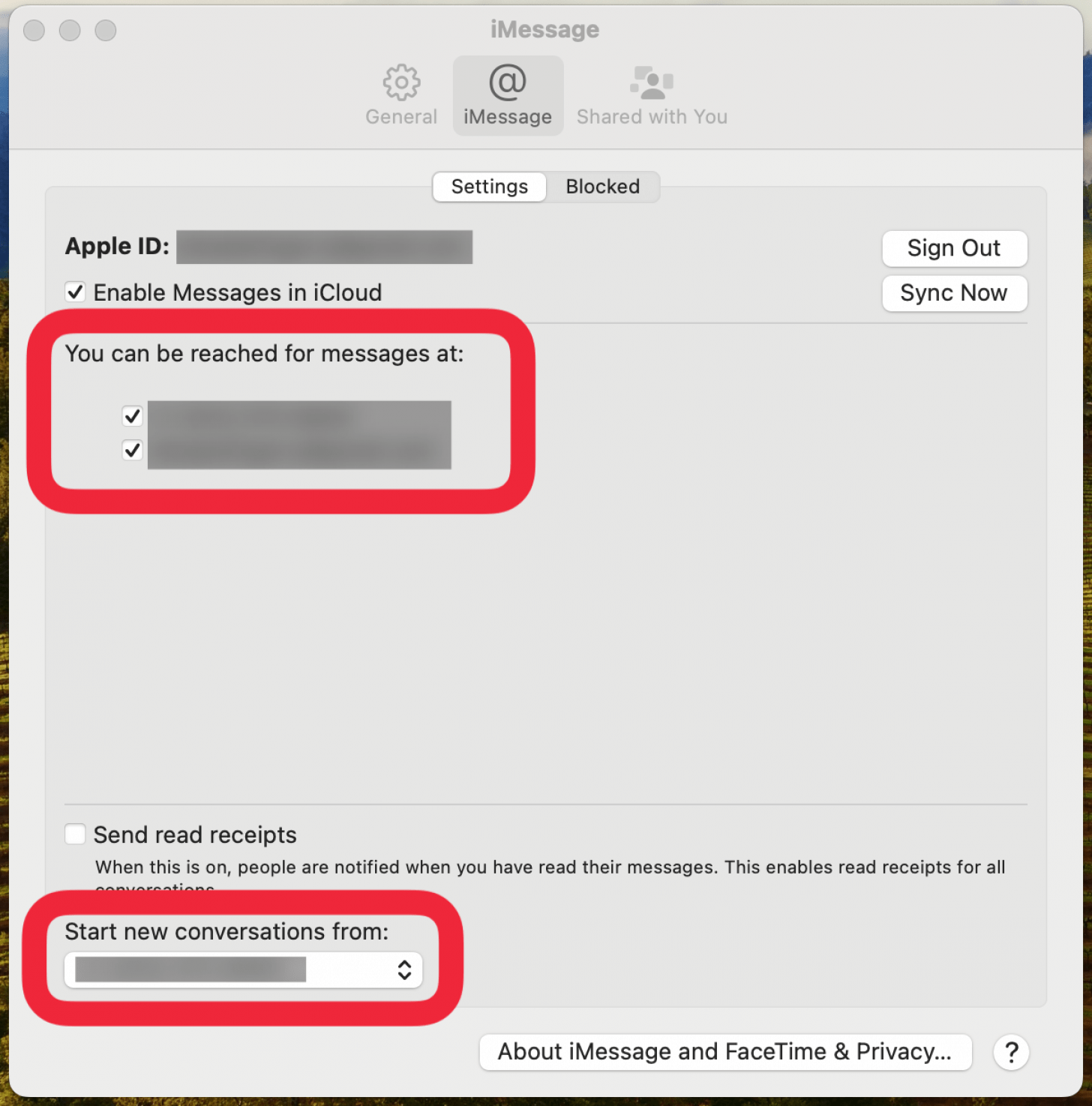
From the Preferences pop-up, find the heading "You can be reached for messages at." Select the phone number and email address you're reachable at. If more than one email address or phone number is selected, you can also select which email address or phone number new conversations will originate from by selecting them under "Start new conversations from."
Send Read Receipts
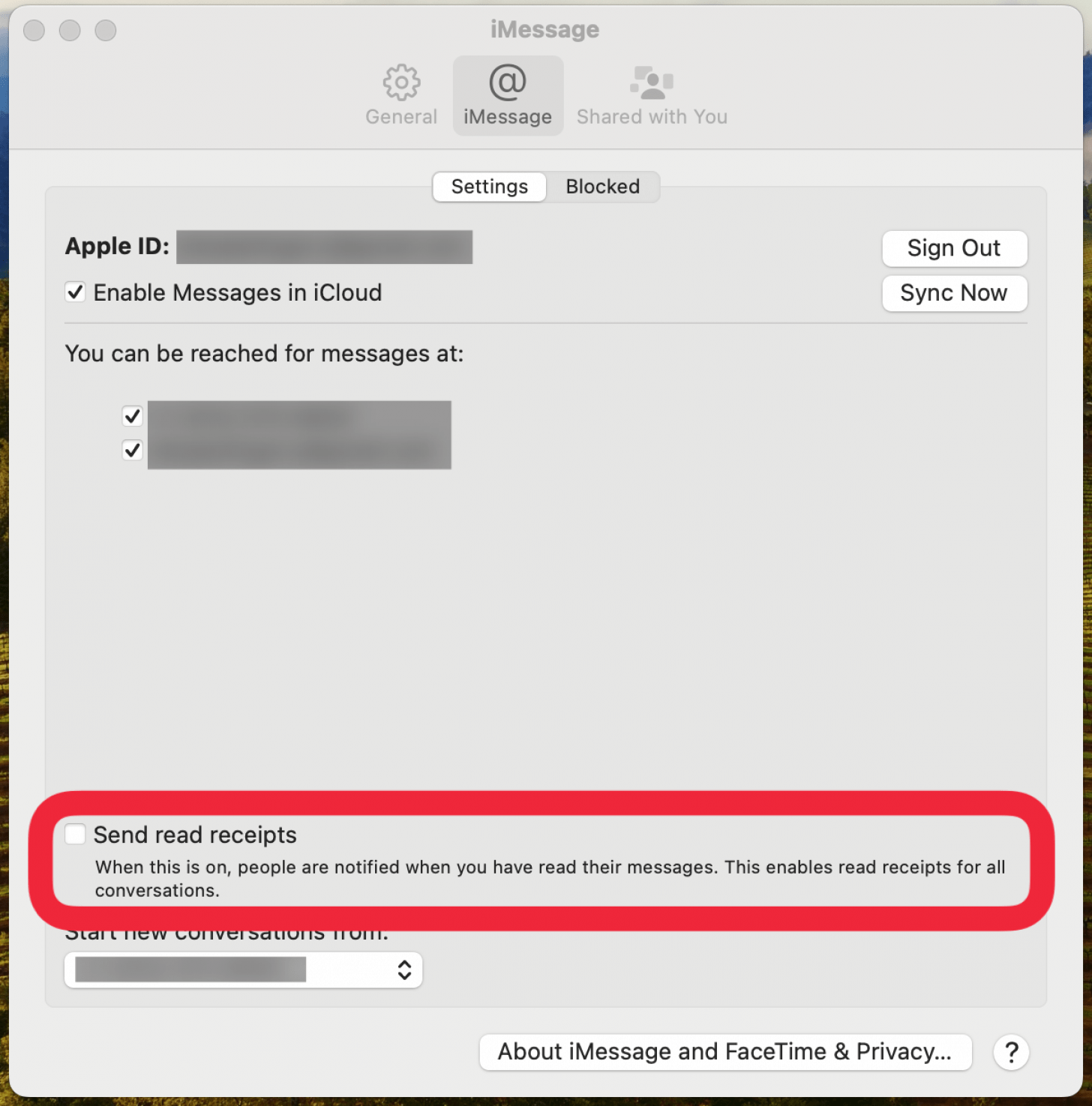
In the Preferences pop-up, you will see a box at the bottom labeled "Send read receipts." When you click this box, others will be able to see when you have read, but not yet responded to, messages they sent you.
How to Turn Off iMessage on a Mac
If you need to disable iMessages on your Mac for any reason (perhaps your friends keep distracting you while you're trying to get some work done), here's how:
- With the Messages app open, at the very top menu bar, click Messages.

- Choose Settings from the drop-down list.

- Click the iMessage tab.

- Click Sign Out.
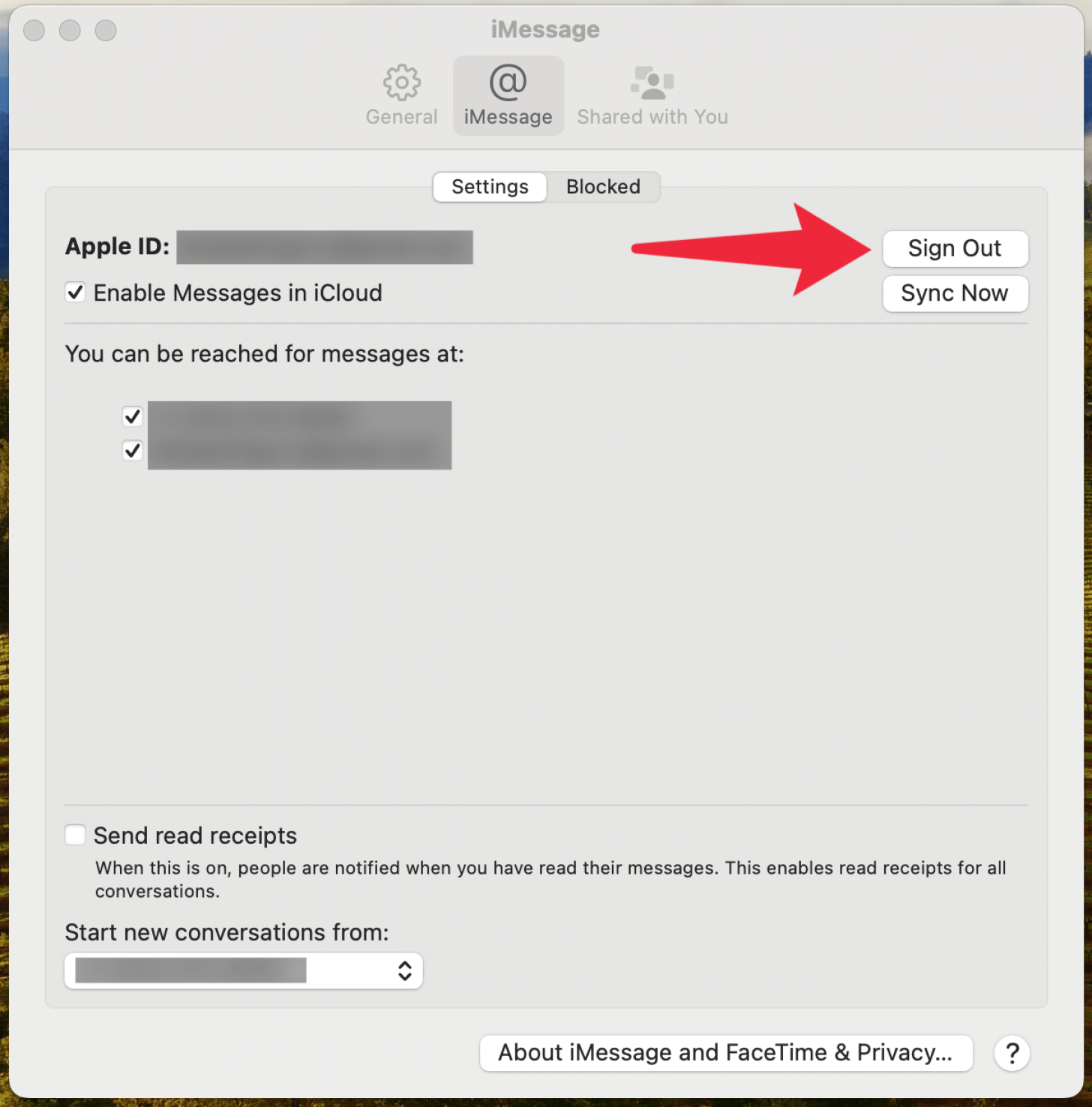
Doing so will log you out of iMessages. Close the app, and you’re done; you will no longer receive iMessage notifications on your Mac.
FAQ
- Why is my iMessage not working on Mac? There are a few reasons why iMessage is not working on Mac. It could be related to sync issues on your Mac or that your Mac is not running the latest software. Ensure your device is updated and that you are signed into the correct Apple ID.
- How do I find old messages on my iPhone without scrolling? The Messages app has a handy search bar that you can use to search for a specific message. Check out our article on how to search iPhone messages to find the text you are looking for.
- Why is my iMessage stuck on waiting for activation? If you are getting an iMessage waiting for activation error, it could be an issue with a specific setting, such as your time zone. It can also be related to your cellular provider, so make sure your carrier settings are up-to-date.
- How can I tell if someone blocked my texts on iPhone? It can be difficult to know for sure whether or not someone has blocked you. Check out our article on how to tell if someone blocked your number on iPhone to find out the best ways to narrow down the possibilities.
Top image credit: W. Phokin / Shutterstock.com

Conner Carey
Conner Carey's writing can be found at conpoet.com. She is currently writing a book, creating lots of content, and writing poetry via @conpoet on Instagram. She lives in an RV full-time with her mom, Jan and dog, Jodi as they slow-travel around the country.
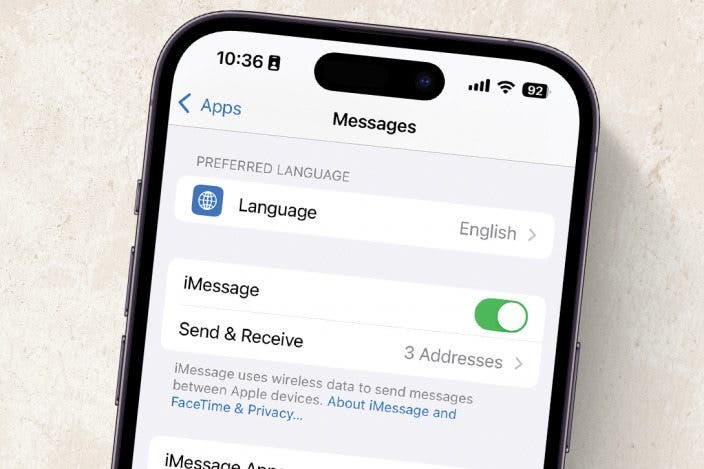

 Linda Ruth
Linda Ruth
 Amy Spitzfaden Both
Amy Spitzfaden Both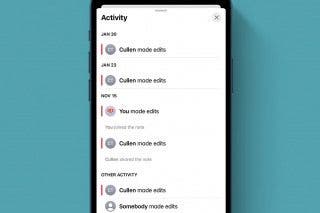
 Rhett Intriago
Rhett Intriago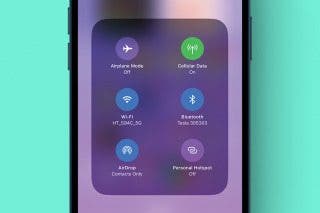
 Olena Kagui
Olena Kagui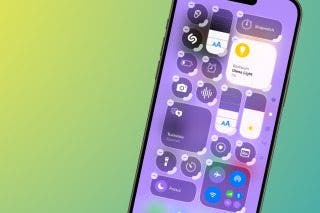
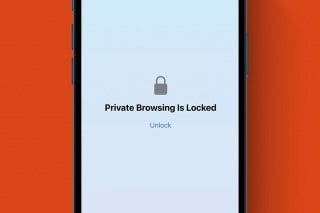
 Rachel Needell
Rachel Needell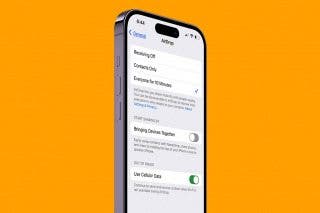
 Leanne Hays
Leanne Hays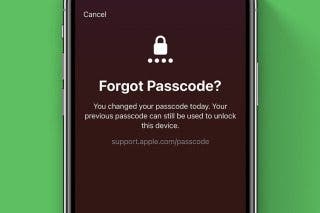
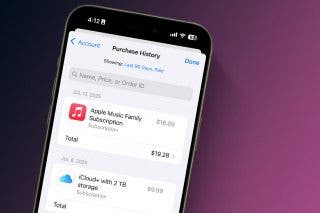
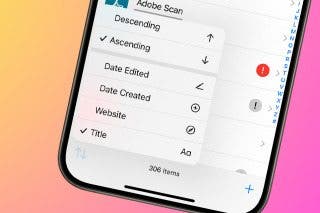
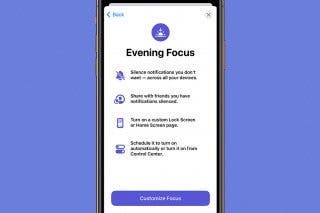

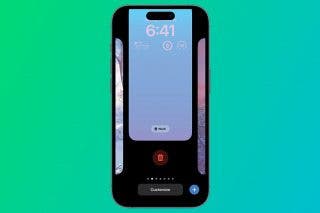
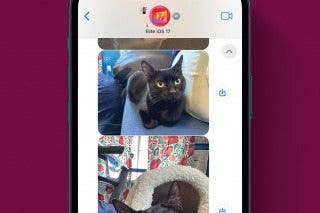

 Brian Peters
Brian Peters